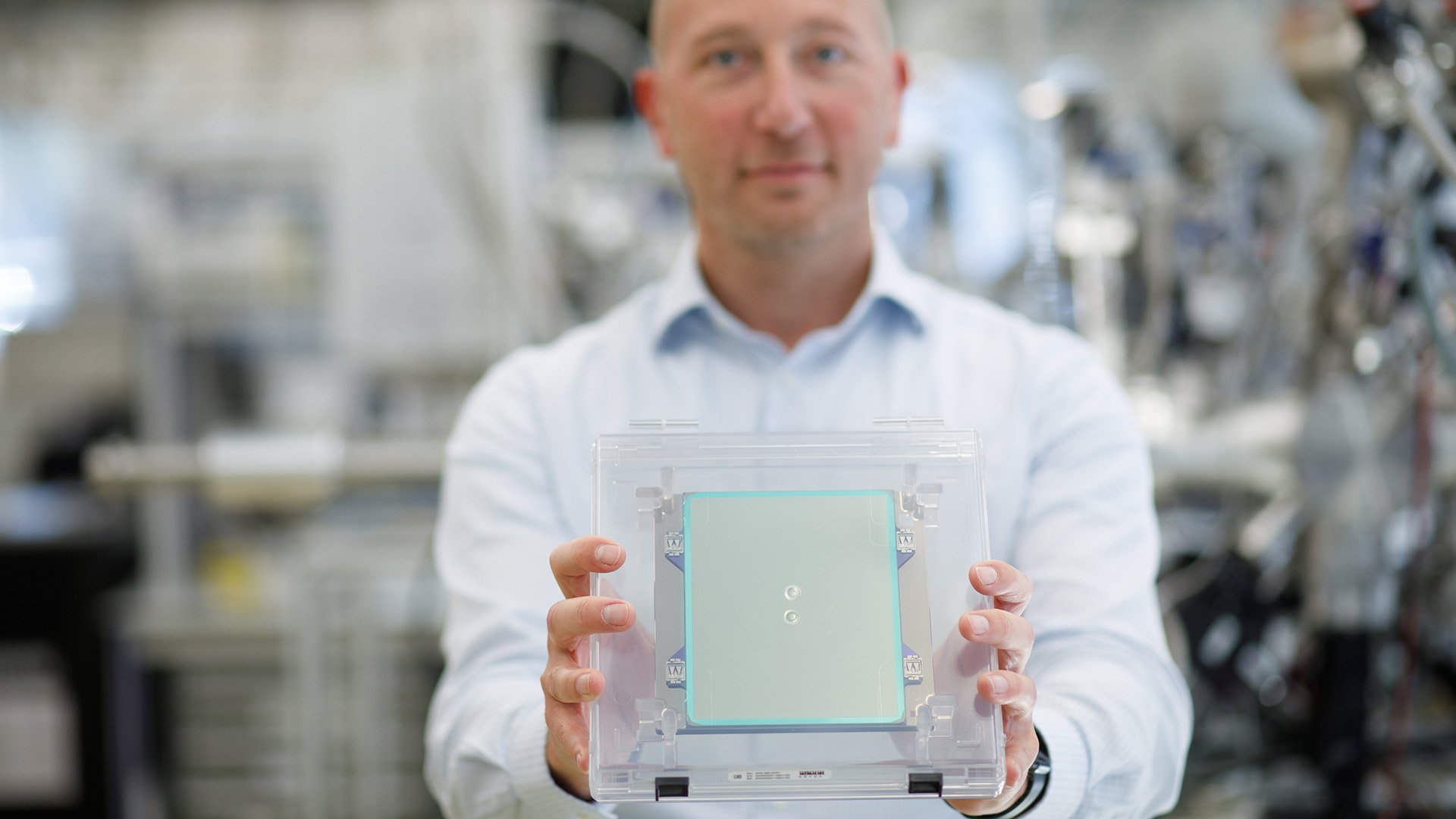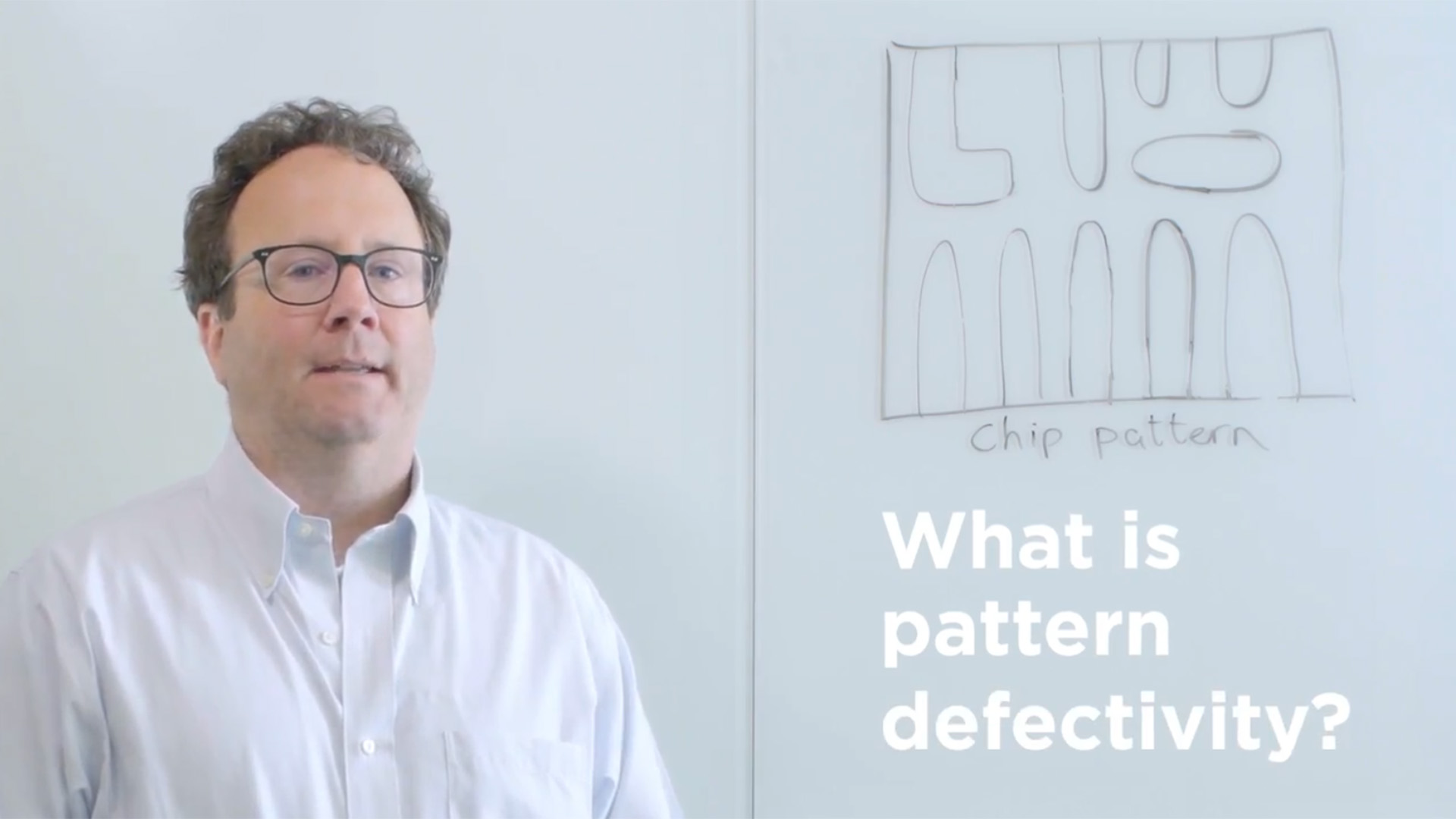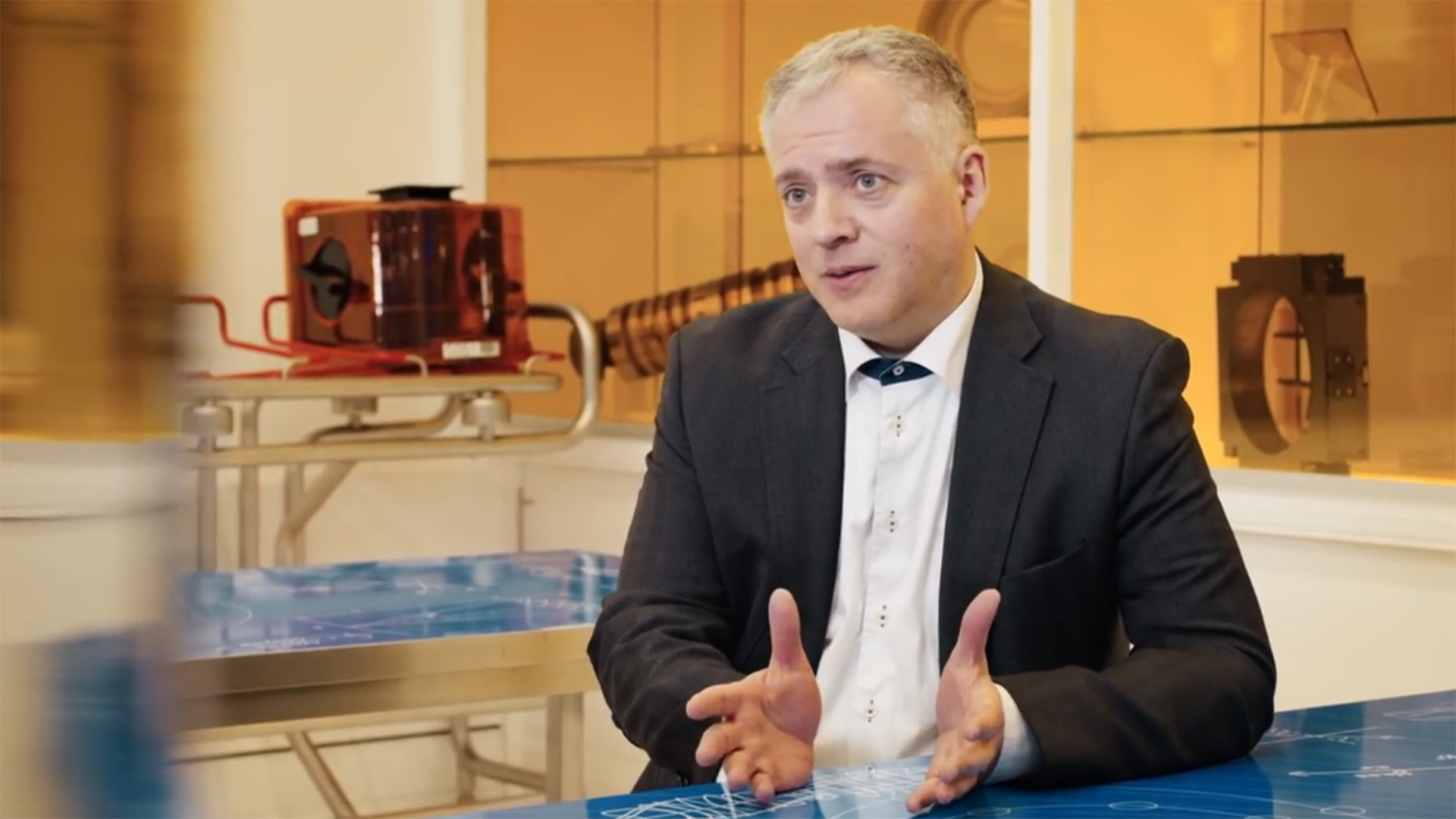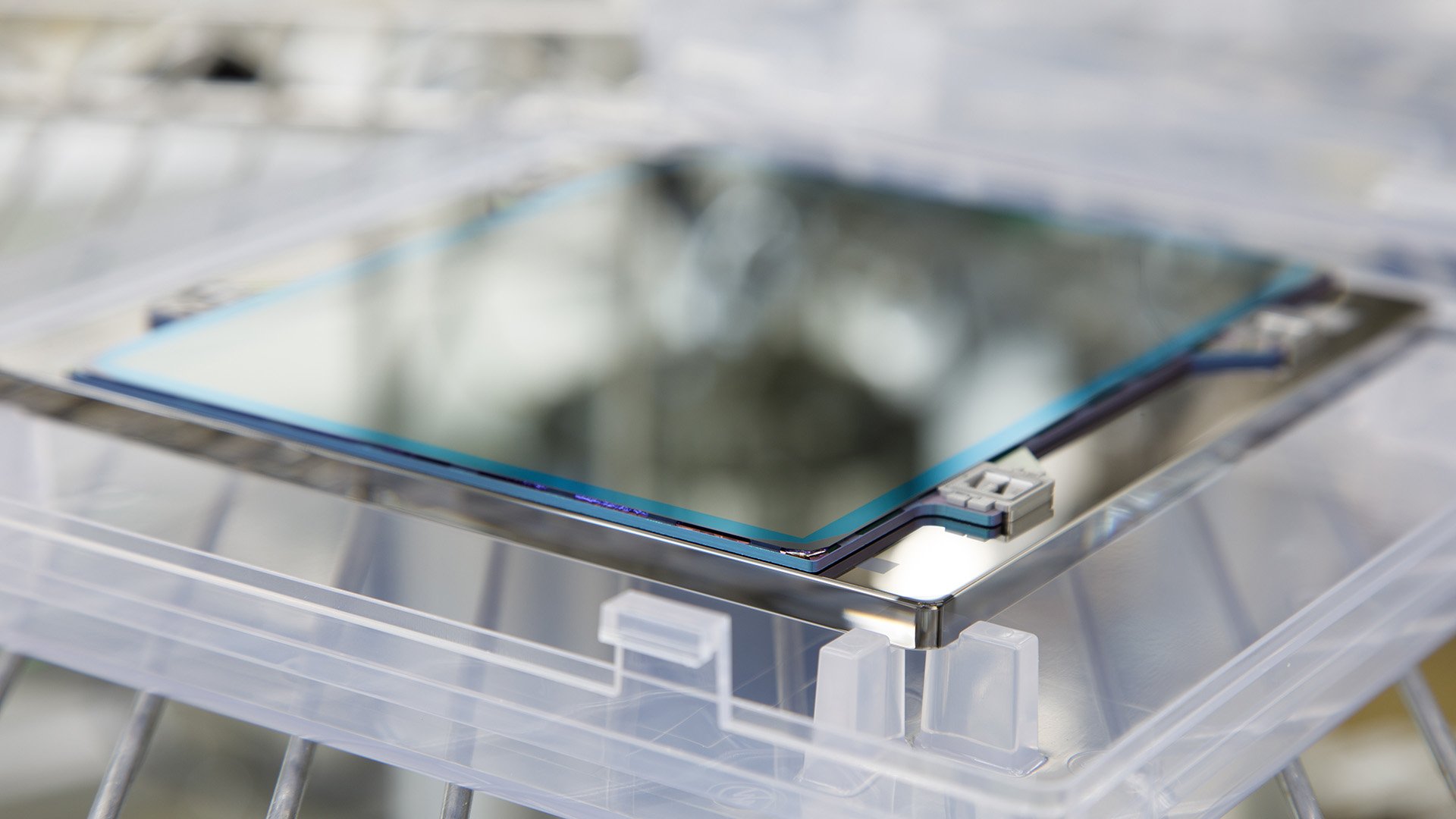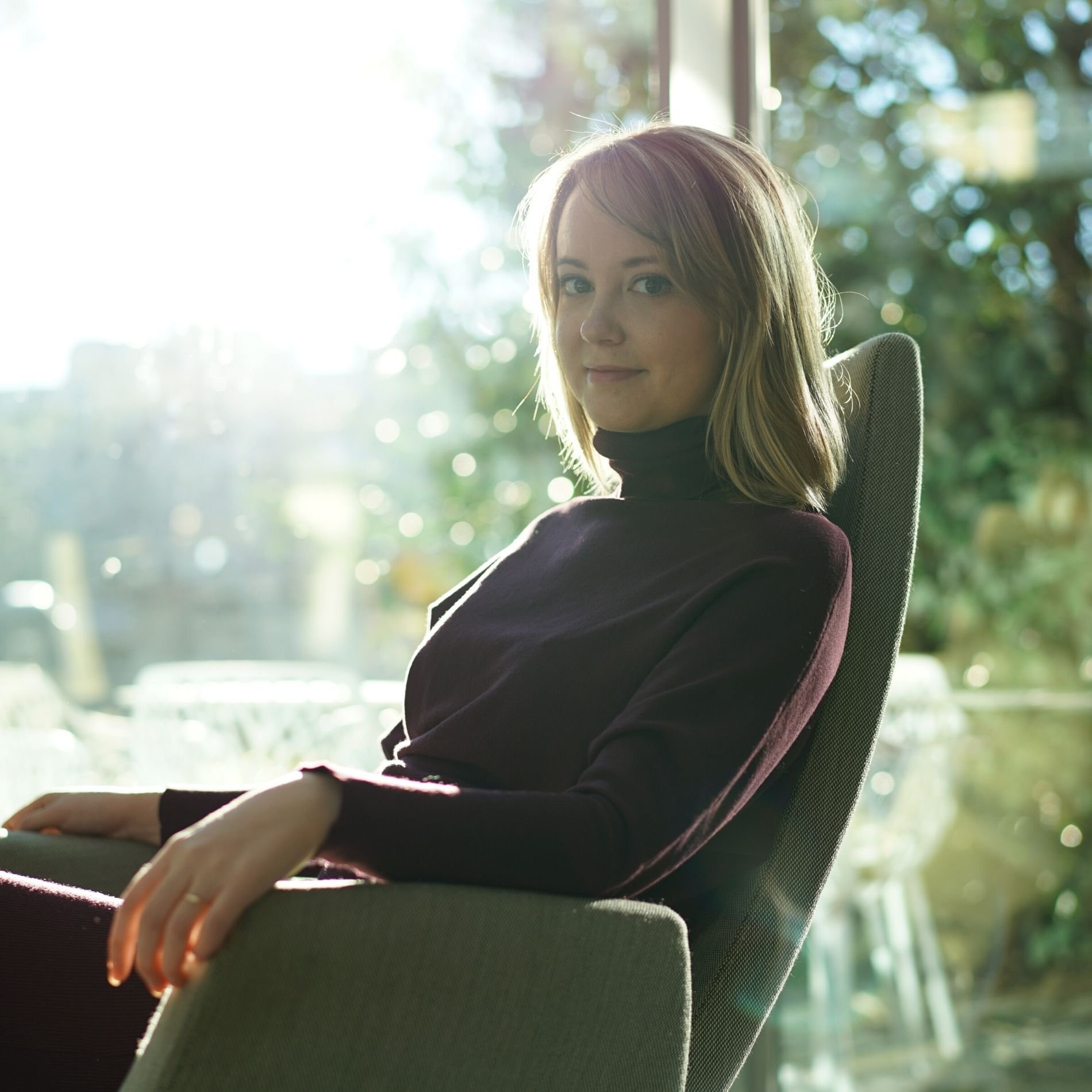5-minute read - by Kate Brunton, September 14, 2022
UPDATE: At a SPIE conference in September 2022, Vadim, Carmen, Guido and six other ASML employees were presented with a BACUS Prize Award “in recognition of their work in the research, development and commercialization of EUV pellicles for high-volume manufacturing.” See the LinkedIn post.
The pellicle is one of the breakthroughs that enabled EUV (extreme ultraviolet) lithography in high-volume microchip manufacturing. In this story, three physicists describe how ASML researched this ‘impossible’ technology and brought it to market.
“Any sufficiently advanced technology is indistinguishable from magic.” – Arthur C. Clarke, British science fiction writer
ASML’s most advanced pellicle seems impossible when you hear about it. A super-thin membrane, 13 nanometers thick (for reference, a human hair is approximately 80,000–100,000 nanometers thick), that lets through extreme ultraviolet (EUV) light whereas most substances absorb it, and that can withstand temperatures of up to 500 degrees Celsius in a high-vacuum environment? It seems unfathomable that this delicate, shimmering film could be so robust, but it is.
Pellicles are used in chipmaking as a way of reducing pattern defectivity. They are positioned inside the lithography machine just below the reticle, or mask (which is much like a stencil containing the blueprint of the pattern to be printed on the wafer), and their job is to catch miniscule particles that would otherwise cling to the reticle and end up printed on the wafer, causing the chip to fail.
ASML has been using pellicles for a long time in DUV (deep ultraviolet) lithography systems, but the stakes were raised when we developed EUV lithography technology. To transmit light of just 13.5 nanometers, the EUV pellicle had to be thinner and be able to withstand much higher temperatures inside the machine.
No one knew if it was possible, but we were keen to try.
